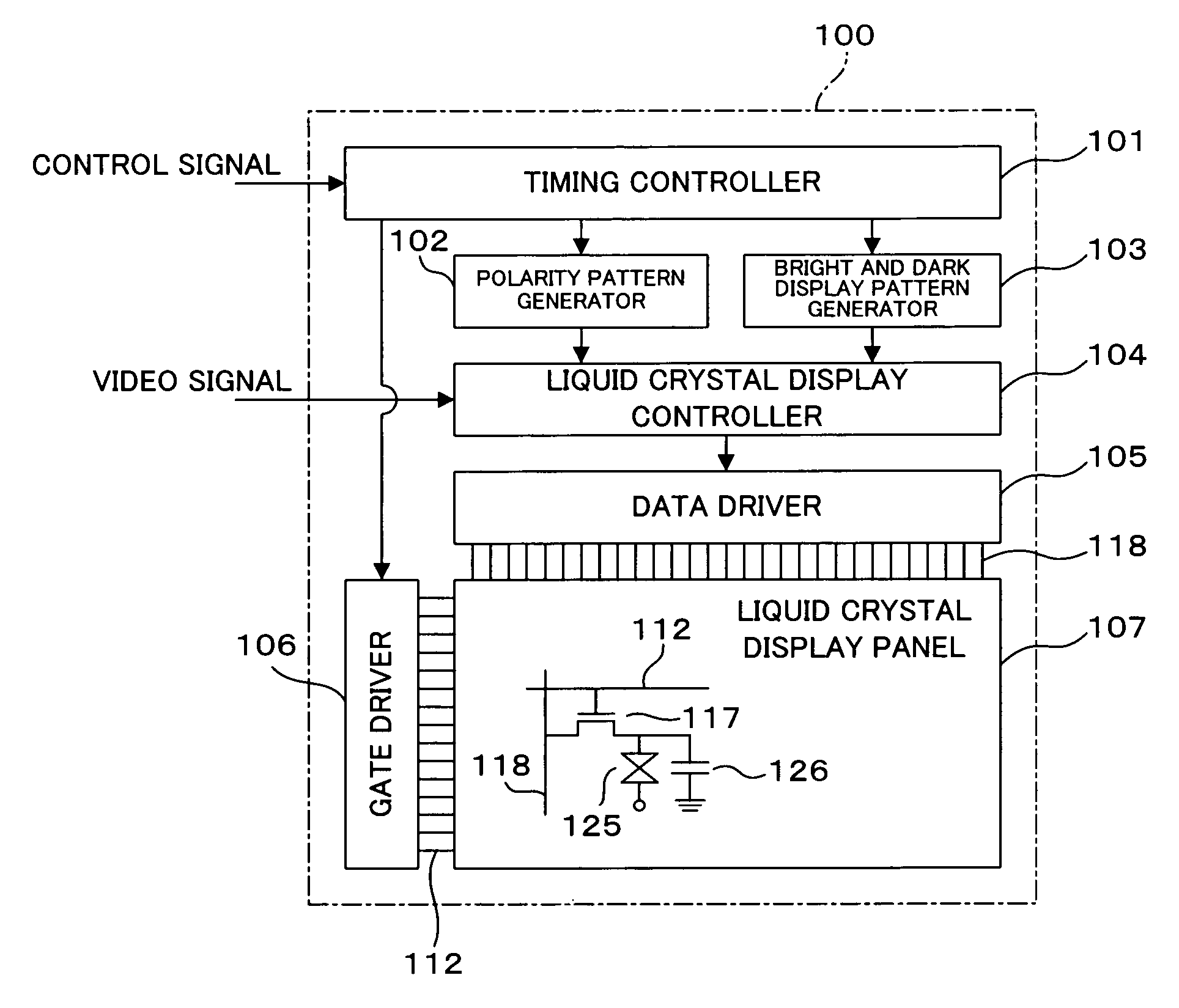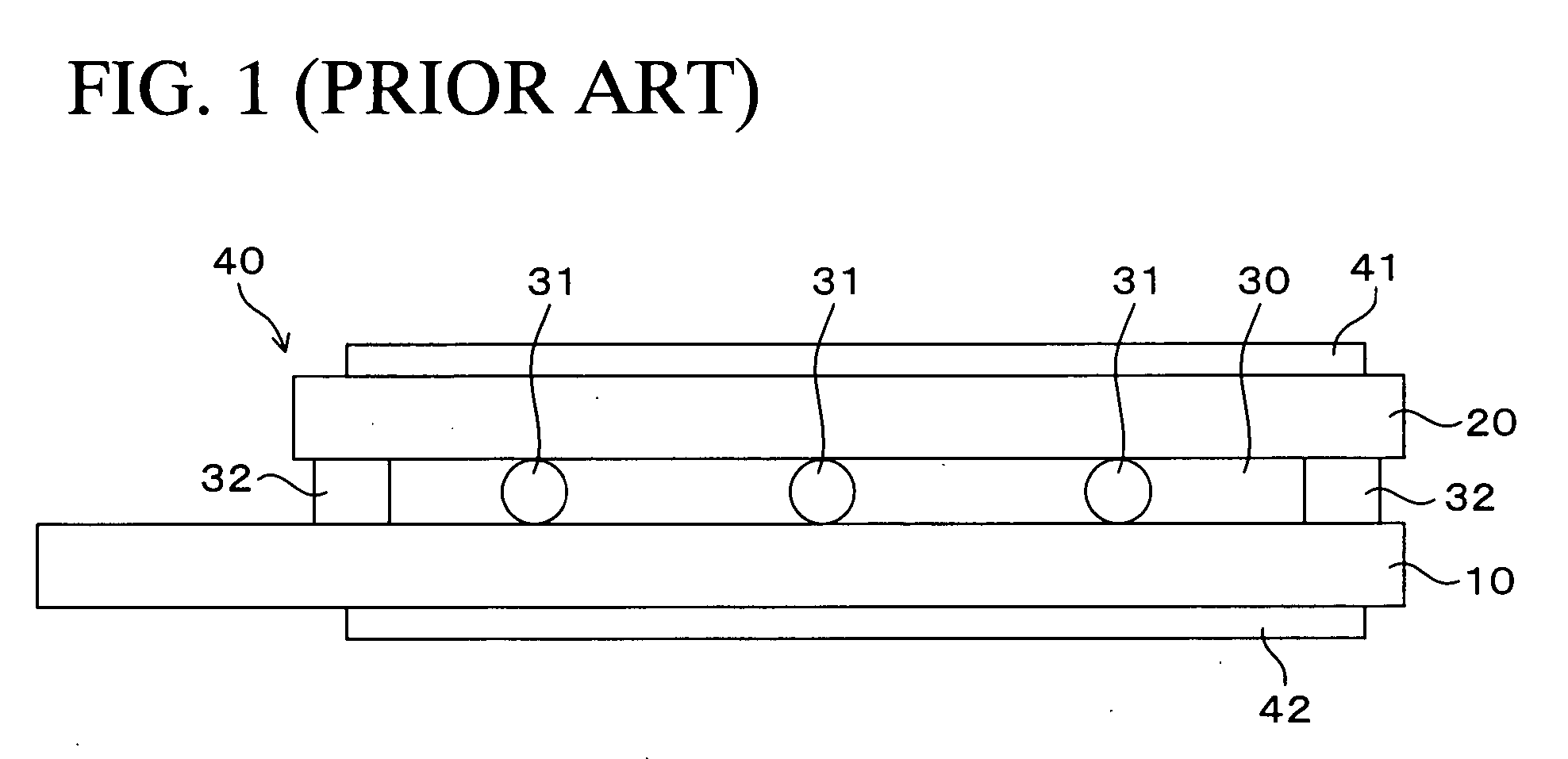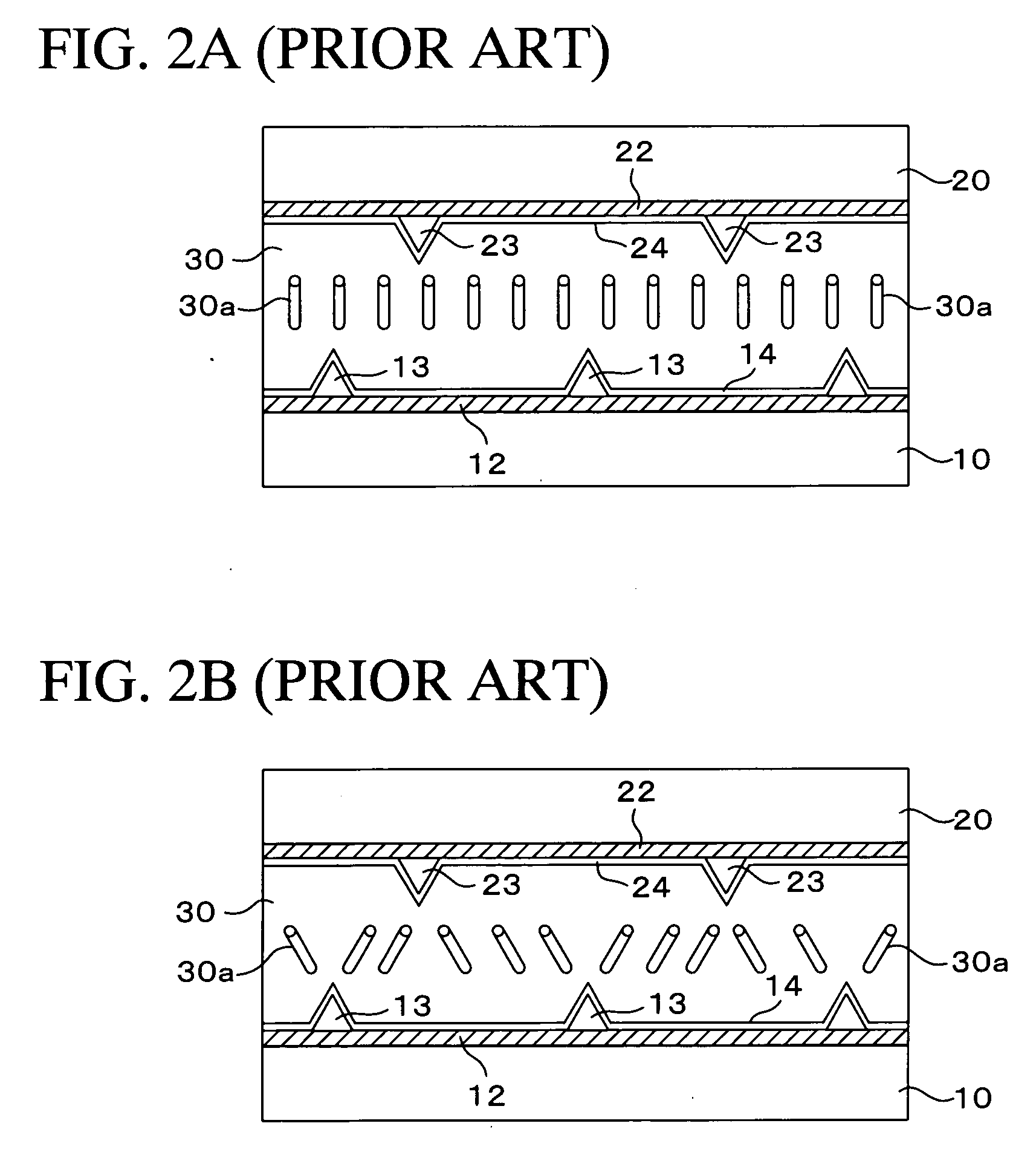Method of driving liquid crystal display device and liquid crystal display device
a technology of liquid crystal display device and display device, which is applied in the field of driving a liquid crystal display device, can solve the problems of capacitive coupling, the phenomenon of whitish screen, and the variation of the contrast or color tone of the screen, so as to avoid a rise in the cost of manufacturing and avoid the effect of rising the cost of manufacturing
- Summary
- Abstract
- Description
- Claims
- Application Information
AI Technical Summary
Benefits of technology
Problems solved by technology
Method used
Image
Examples
first modified embodiment
[First Modified Embodiment]
[0115] A driver IC (integrated circuit), which is adapted to reverse the polarity every two data bus lines 118, is necessary in order to implement a driving method as shown in FIGS. 20A to 20D. However, almost all of driver ICs in current use are adapted either to apply voltages of opposite polarities to adjacent data bus lines or to apply a voltage of the same polarity to all data bus lines. A driver IC may be newly designed to generate the polarity patterns as shown in FIGS. 20A to 20D. In this case, the driver IC, however, cannot be used for general purposes, and thus leads to a rise in the cost of manufacturing the liquid crystal display device.
[0116] A first modified embodiment uses a general-purpose driver IC which is conventionally used. Specifically, driver ICs 151 and 152 are disposed over and under the liquid crystal display panel 107, respectively, as shown in FIG. 21. The upper driver IC 151 is used to drive odd-numbered data bus lines 118, an...
second modified embodiment
[0118]FIG. 22 is a schematic illustration showing a liquid crystal display device according to a second modified embodiment. In the second modified embodiment, a general-purpose driver IC 153 is also used. In the second modified embodiment, the horizontally arranged data bus lines 118 are divided into groups of four, starting at the leftmost end. The second ((4k+2)th) data bus line 118 from the left, which belongs to each group, crosses and is connected to the third ((4k+3)th) metal wiring 161 (where k denotes any natural number including 0). More specifically, the (4k+1)th, (4k+2)th, (4k+3)th, and (4k+4)th metal wirings 161 are connected to the (4k+1)th, (4k+3)th, (4k+2)th, and (4k+4)th data bus lines 118, respectively. When the metal wirings arranged in sequence are connected to the data bus lines arranged in sequence, the metal wiring and the data bus line having different numbers are connected as mentioned above. Hereinafter, this connection is referred to as “wiring replacement...
PUM
 Login to View More
Login to View More Abstract
Description
Claims
Application Information
 Login to View More
Login to View More - R&D
- Intellectual Property
- Life Sciences
- Materials
- Tech Scout
- Unparalleled Data Quality
- Higher Quality Content
- 60% Fewer Hallucinations
Browse by: Latest US Patents, China's latest patents, Technical Efficacy Thesaurus, Application Domain, Technology Topic, Popular Technical Reports.
© 2025 PatSnap. All rights reserved.Legal|Privacy policy|Modern Slavery Act Transparency Statement|Sitemap|About US| Contact US: help@patsnap.com



